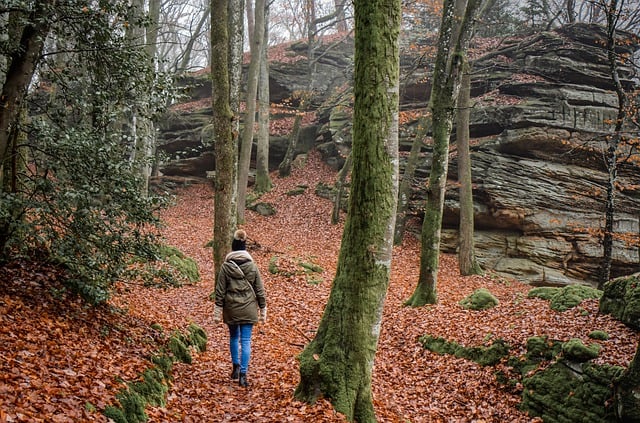David Treleaven presented on the topic, Resilience to Trauma, at the recent Embodiment Festival 2023. He made the point that while meditation and mindfulness practices can help some people recover from trauma, meditation may not work in individual cases. He argued that suggesting “more” meditation is not the answer – we have to recognise the complexity of trauma and how it plays out in different people’s lives. Individual’s hypervigilance as a result of trauma may impede their capacity to be still and reflect and they may find themselves continuously oscillating between a trauma response and temporary wellness – impeding their capacity to develop resilience.
David commented that trauma can create a level of rigidity in our response to stressors. He noted that in some cultures such as Australia, Ireland, and South Africa, humour plays an important role in helping people to develop resilience. Mark Walsh, Festival organiser and interviewer, commented that after undertaking trauma recovery work in Ukraine, he realised that humour is an integral part of the resilience of the Ukrainian people. It was noted, too, that the current President, Zelenskyy, was previously a comedian and actor.
When Mark asked David what advice he would give to young people in these present challenging times, David suggested that it is important to undertake a regular practice that builds personal resilience. He maintained that this is very much a personal choice but whatever practice you choose, to do so purposefully and “don’t be afraid to make a mistake”. This wide-ranging discussion increased my interest in the relationship between trauma and resilience. I decided to explore David’s podcast series, Trauma-Sensitive Mindfulness, where he interviews trauma experts to explore the intersection of mindfulness, meditation and traumatic stress.
Trauma and Resilience
I was immediately attracted to David’s podcast interview with Anjuli Sherin on the topic, Resilience, Mindfulness and Trauma Recovery. Anjuli is a Pakistani American who specialises in trauma recovery with families, especially members of immigrant families. She is a highly qualified and experienced therapist who offers individual therapy sessions, healing groups, guided meditations, training and her Joy Blog. Anjuli is the author of Joyous Resilience – A Path to Individual Healing and Collective Thriving in an Inequitable World. The interview is very rich in its discussion of resilience and Anjuli’s book, because she shares insights from her own life experience and the resilience journey of her therapy clients. David, himself an expert in trauma and trauma recovery, acknowledged that he learnt some new things as a result of the interview.
Anjuli begins with recounting her own trauma recovery journey, highlighting the trauma she experienced as an 18 year old, female immigrant to America. Not only did she feel totally disconnected from her new cultural environment, she was also carrying the scars of intergenerational trauma resulting from living with her family in the “systems of oppression” present in Pakistan as she was growing up. She found herself alone in America with no “compass”, family or community, while still in her early 20’s.
Anjuli experienced what Bruce Perry describes as a “sensitised stress response” which led to overreactivity and maladaptive behaviour. She describes her trauma as translating into “anger, fear and violence”. She found that she did not cope with the stressors in intimate relationships, partly because she could not access, and express, her feelings and needs. She was experiencing “emotional dysregulation” where she lacked control over her emotional responses. Her reactivity in her relationships led to more stress and feelings of shame. Anjuli describes this trauma experience as the ”cycle of trauma” – the “vulnerable self” experiences stressors that lead to reactivity which, in turn, increases a sense of vulnerability, fear and helplessness that, again, heightens reactivity and maladaptation. The trauma cycle results in negative self-evaluation, avoidance, and questioning “what’s wrong with me?” – creating a further “cycle of suffering”. An alternative mindset explores “what happened to you?” and seeks to understand trauma, its complexity and impacts.
The “circle of resilience”
Anjuli describes the trauma recovery journey experienced by herself and her clients as a journey towards, and into, the “circle of resilience”. This is a process, not a set state, that involves developing or accessing “four aspects of self” that enable the development of resilience and facilitate trauma recovery. These aspects of self replace self-criticism, self-neglect and denial of feelings. Anjuli maintains that people who have experienced trauma are often not able to use the “tools of resilience” (such as mindfulness, yoga, Tai Chi or exercise) in a sustainable way because of their “vulnerable self’ and being stuck in their reactivity and sense of helplessness.
Anjuli noted that in her early stages of arrival in America she ignored advice to seek a therapist to help her with her trauma recovery. It was only after the stressors she was experiencing increased (e.g. graduation and relationship stress) that she heeded advice to seek therapeutic assistance. She had been mired in her negative self-evaluation and her maladaptive behaviour up until that time.
The “four aspects of self” for the resilience journey
Through her own therapy and consulting with her clients, Anjuli identified what she calls the “four aspects of self” that enable anyone who has experienced trauma to undertake the resilience journey. She found that her own therapy “changed everything” and helped her to develop resilience by providing “foundational teaching” to shift from emotional dysregulation to emotional regulation, to move from stress and shame to self-care, and to develop “healthy control and agency over actions, emotions and relationships”. Her reactivity diminished and she was able to understand her own needs and ask for what she needed.
During therapy she developed the “four aspects of self” that enabled her to enter the path, and move along the journey, to healing and resilience, thus enabling her to utilise the tools of resilience, such as mindfulness and exercise, in a sustainable way. The four aspects described in depth by Anjuli in her book are:
- Nurturing – self-talk that recognises feelings (naming her feelings) and “turns to those feelings with attunement and loving kindness”, leading to acceptance
- Protection – establishing healthy boundaries and limits
- Play and creativity – accessing the things that bring pleasure
- Awe and Gratitude – through the experience of beauty and “interdependence with the larger world”.
Anjuli explained that these four aspects of self, enabled her to let go of her “vulnerable self” and to acknowledge that she is able to deal with challenging emotions such as grief and fear. She stated that these four states “are not built outside of relationship”. She reinforced the critical role of supportive relationships in the journey to recovery and resilience. Brooke Blurton in her memoir, Big Love: Reclaiming myself, my people, my country, highlighted the relationship orientation of her Aboriginal culture and its role in helping her through multiple sources of trauma to heal and develop resilience. She experienced intergenerational trauma, poverty, homelessness, sexual abuse and racism, yet throughout she was sustained by the “constant love” of her addicted mother and the love of her family (especially her Nan and siblings), the extended family of “Aunties” and “Uncles” and what she calls “the mob”. Anjuli reinforced supportive relationships as a “source of resilience” in that they provide protection, nurturing and a readiness to listen and positively affirm a person’s experience and emotions and offer reassurance that they “are not alone”.
Reflection
Supportive relationships appear consistently as a key element for trauma recovery and the development of resilience. When I reflect on my own experience of recovery from personal trauma, I am able to acknowledge the central role played by nurturing, protective relationships. Anjuli’s book promotes personal and collective healing and recovery, and offers supportive practices and insightful case studies that facilitate the development of resilience and encourage joyful thriving.
Resources that can help us achieve trauma resilience, and the ability to cope with life’s challenges, include the Healing Trauma Program offered by Sounds True which involves 13 key trauma recovery experts such as David Treleaven. Sounds True also offer a shorter course, Trauma and the Embodied Brain, facilitated by Bonnie Badenoch, PhD. Bonnie is the author of the book, The Heart of Trauma: Healing the Embodied Brain in the Context of Relationships.
________________________________
By Ron Passfield – Copyright (Creative Commons license, Attribution–Non Commercial–No Derivatives)
Disclosure: If you purchase a product through this site, I may earn a commission which will help to pay for the site, the associated Meetup group, and the resources to support the blog.



